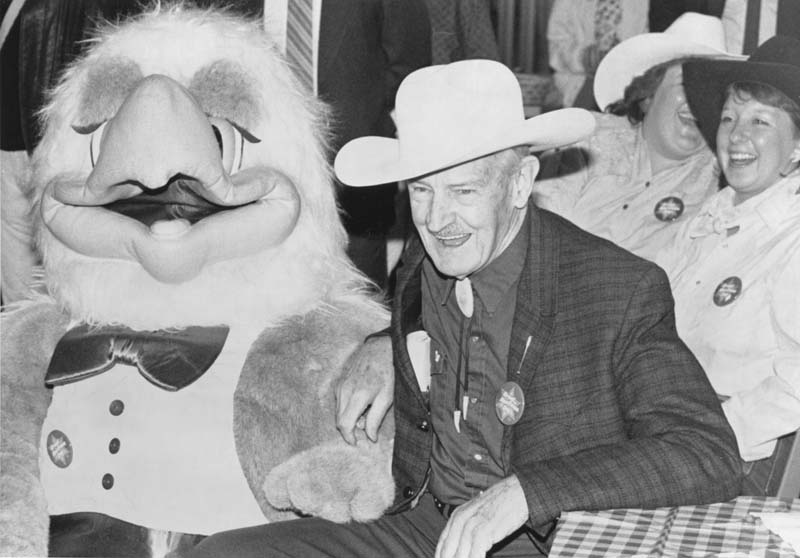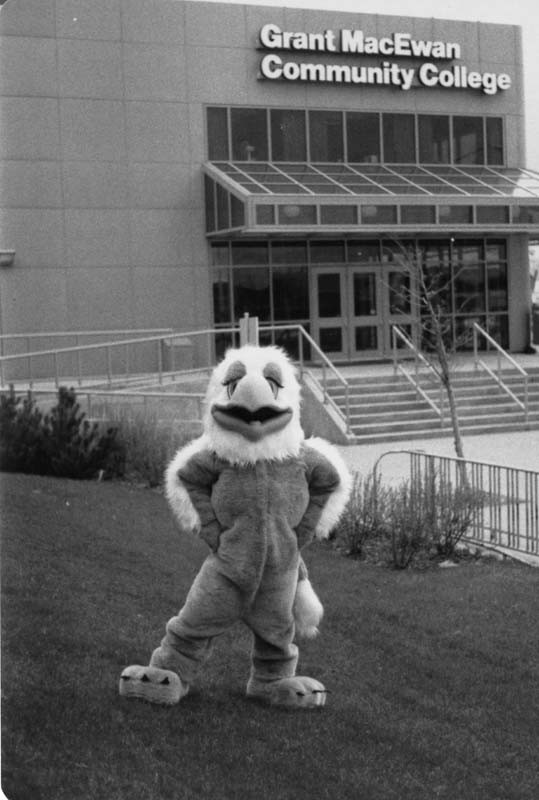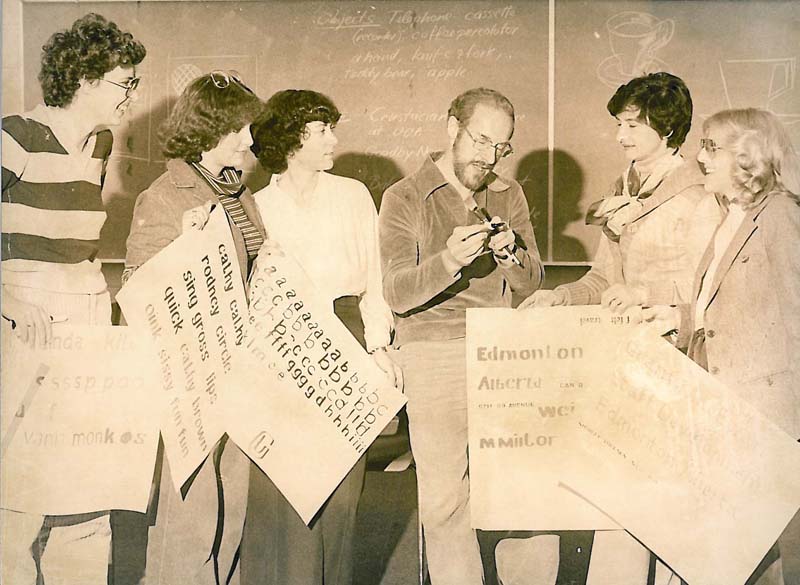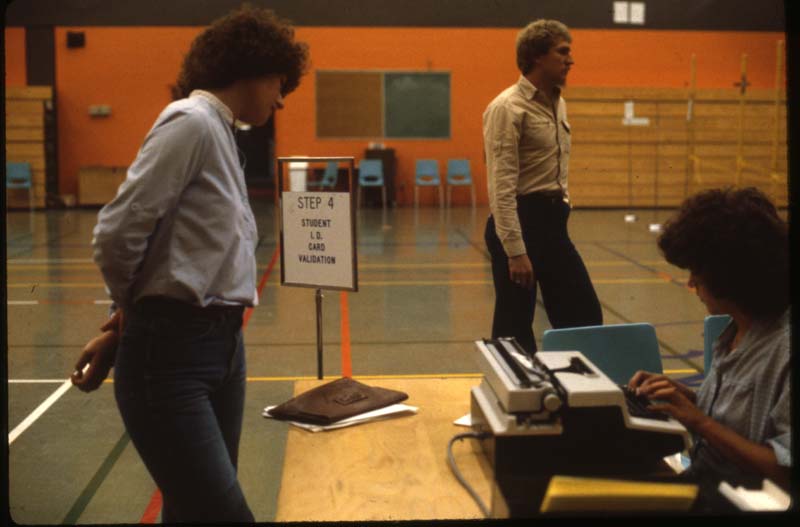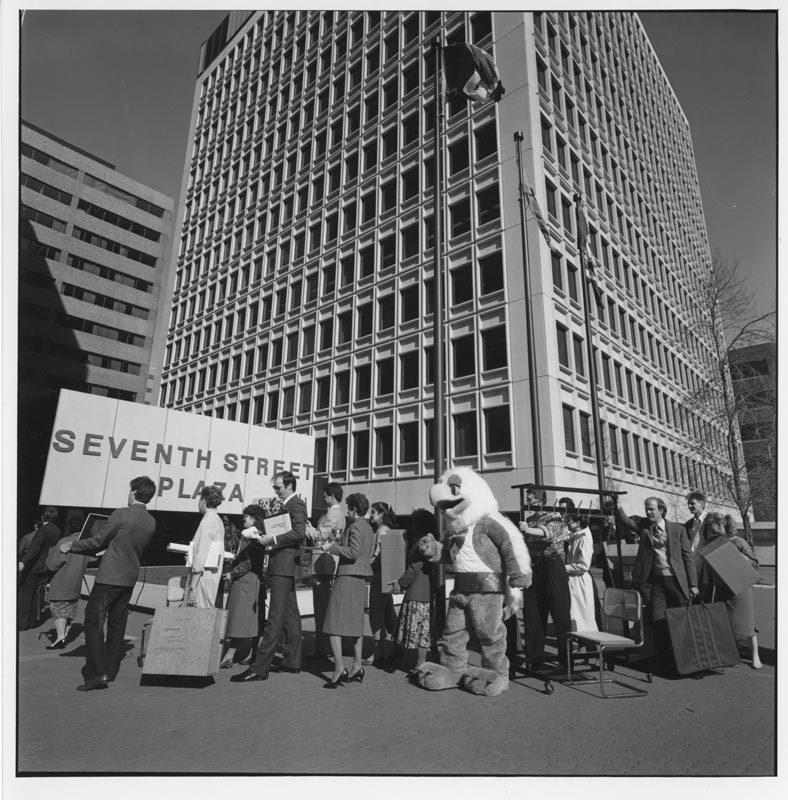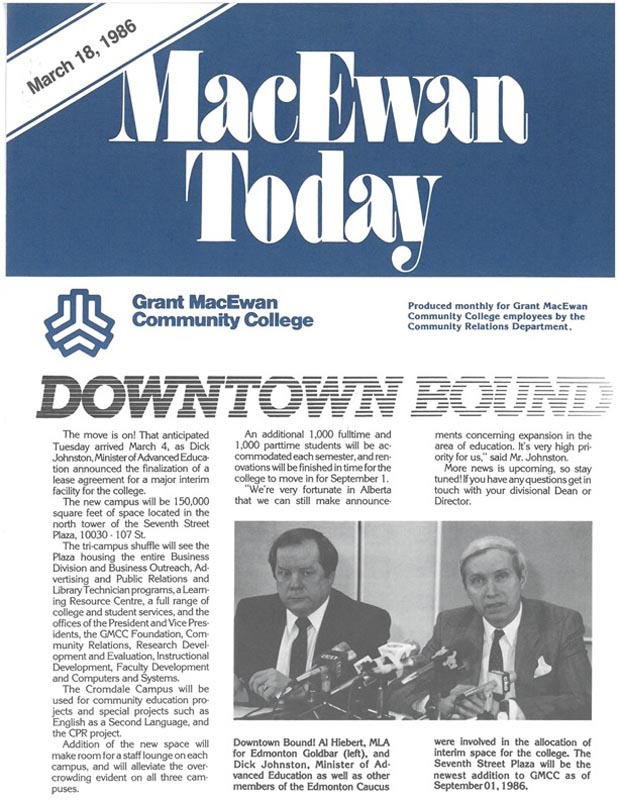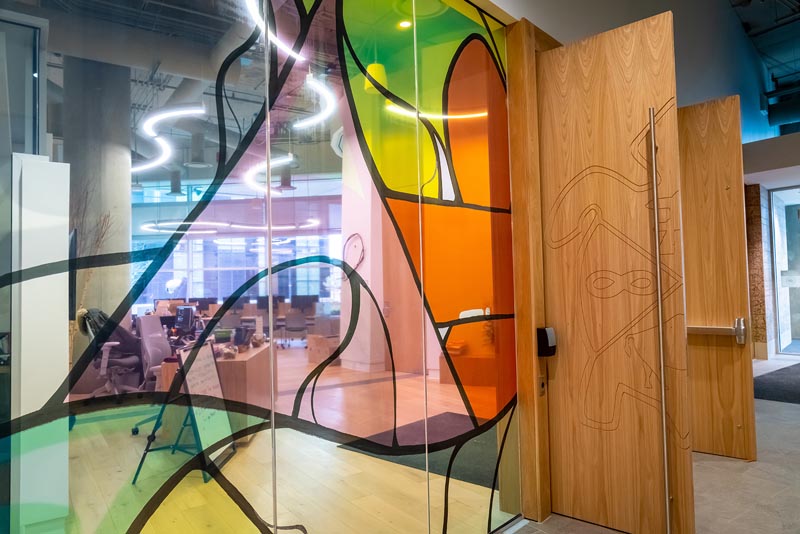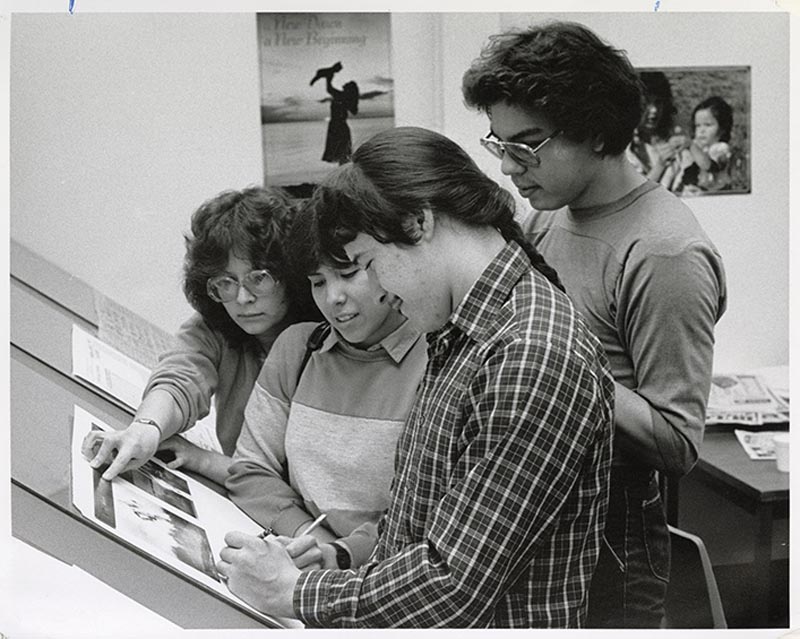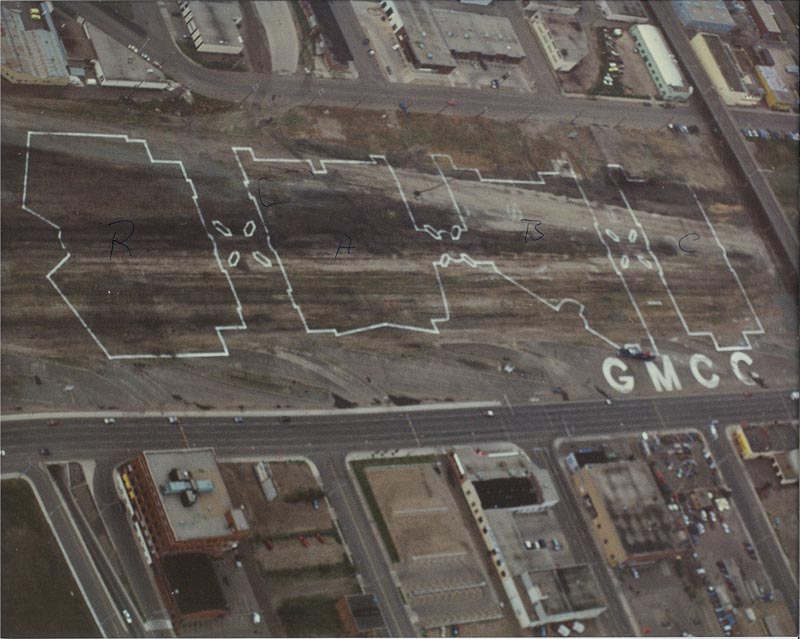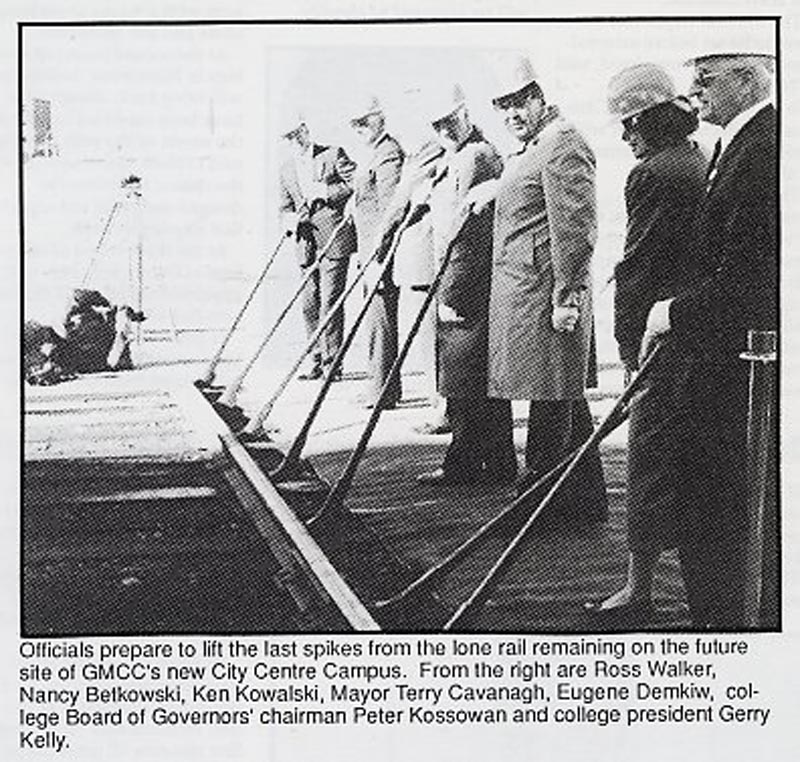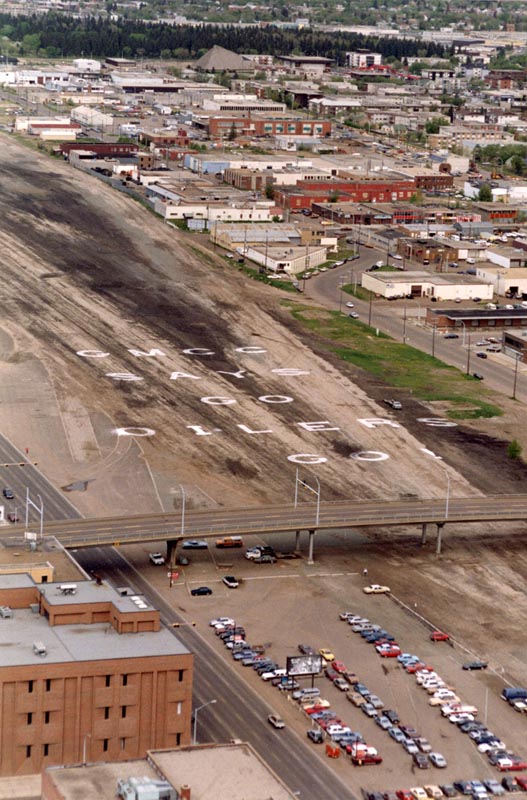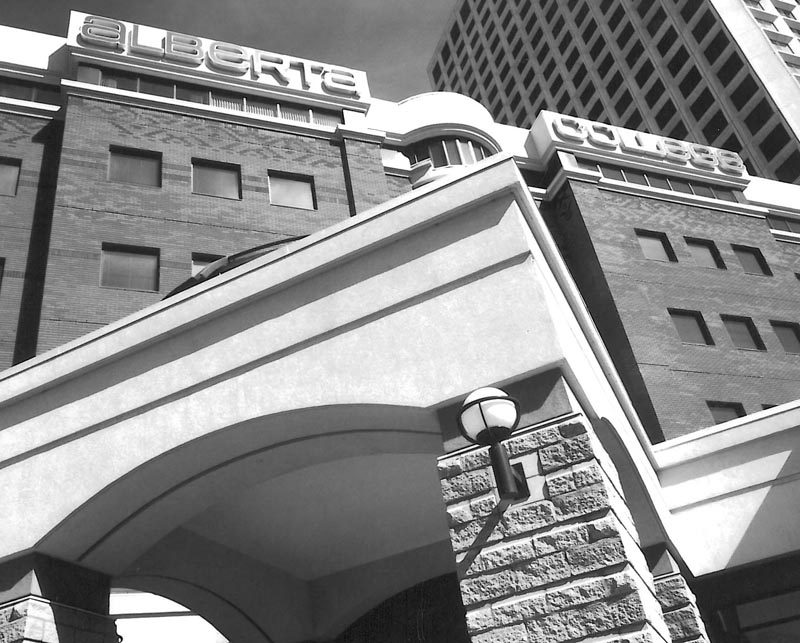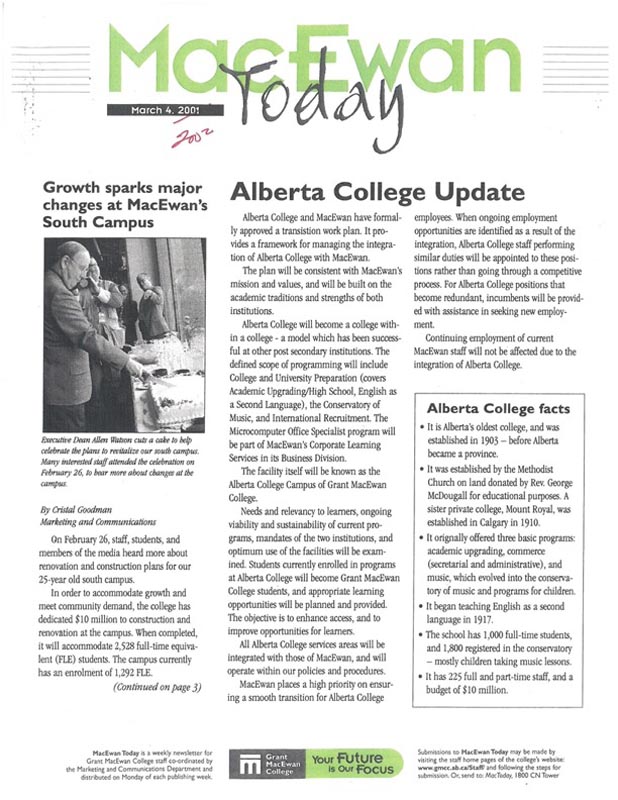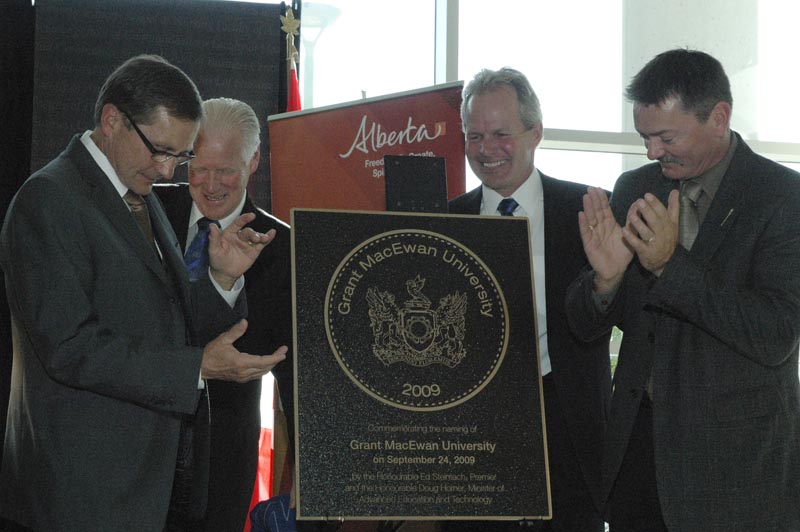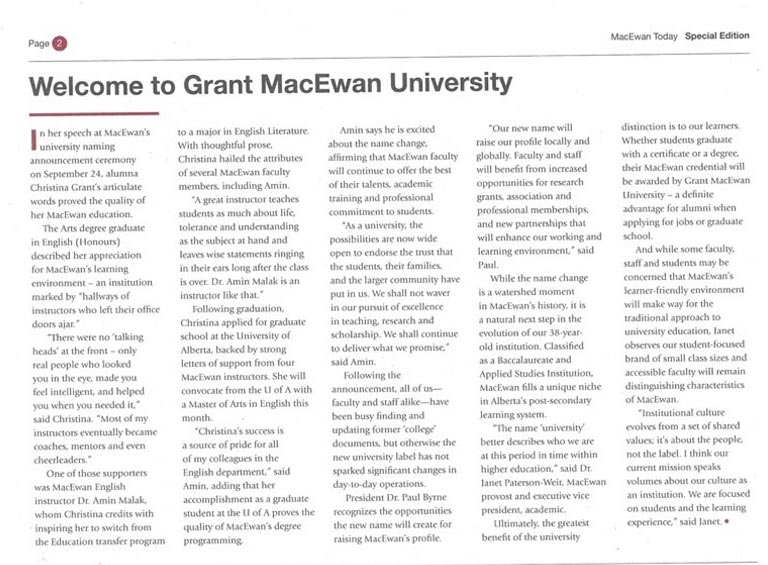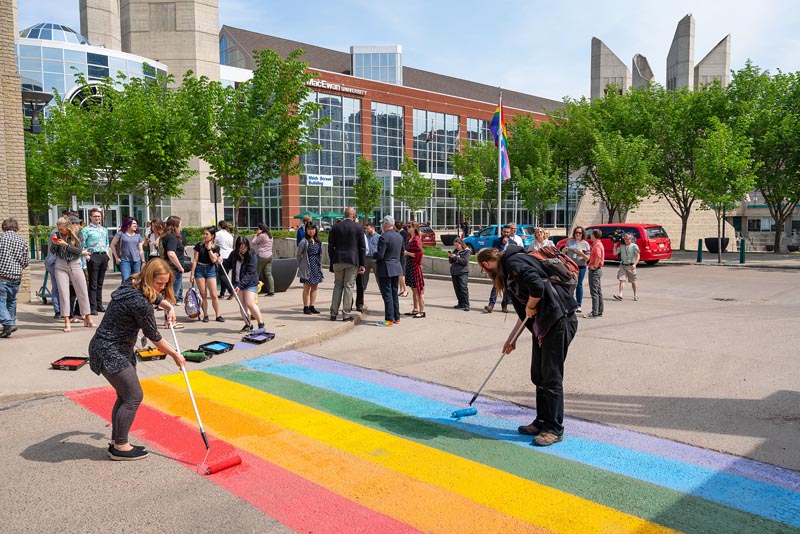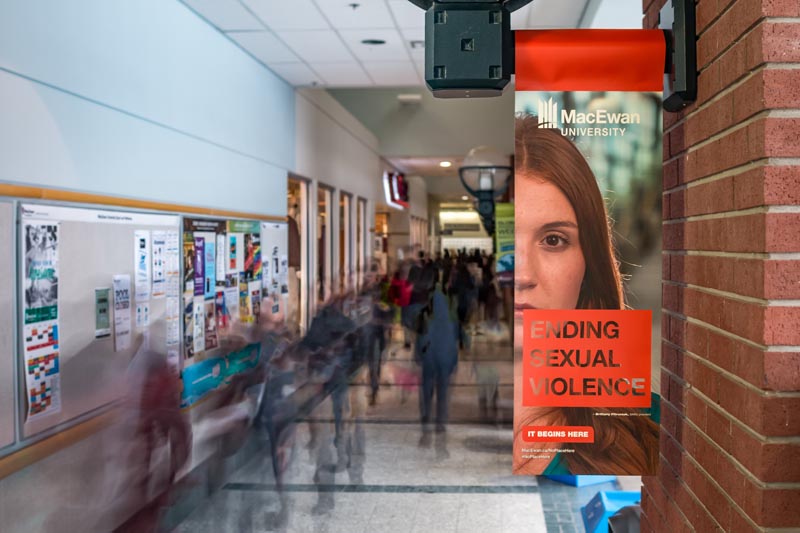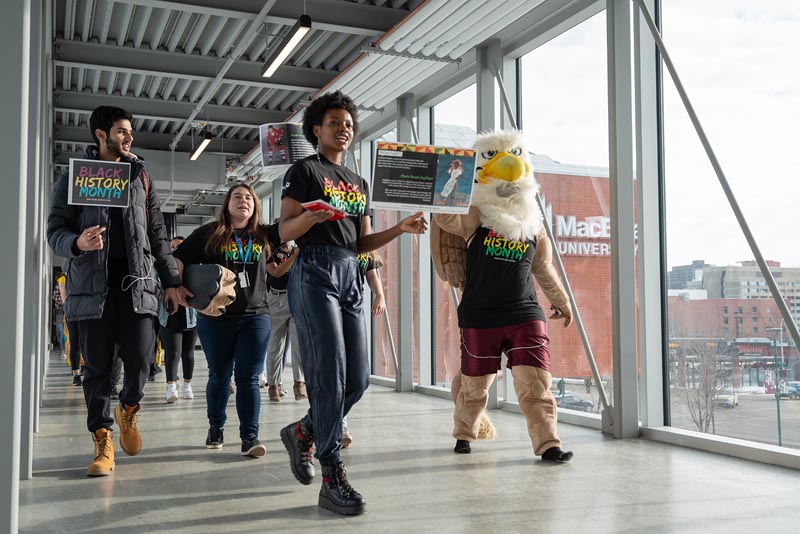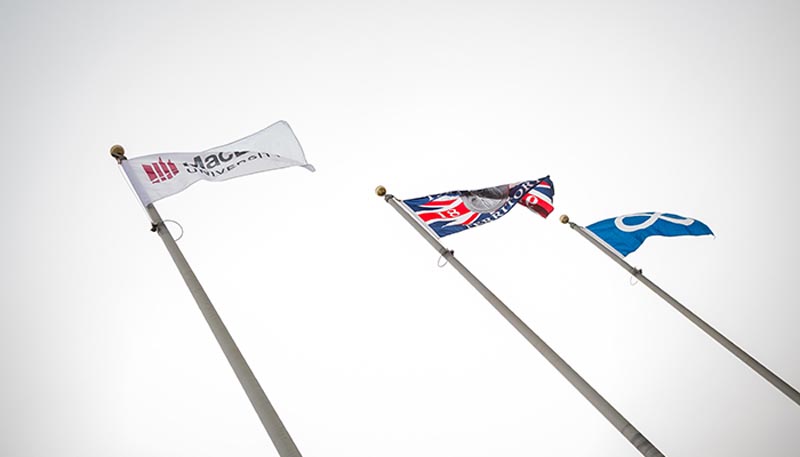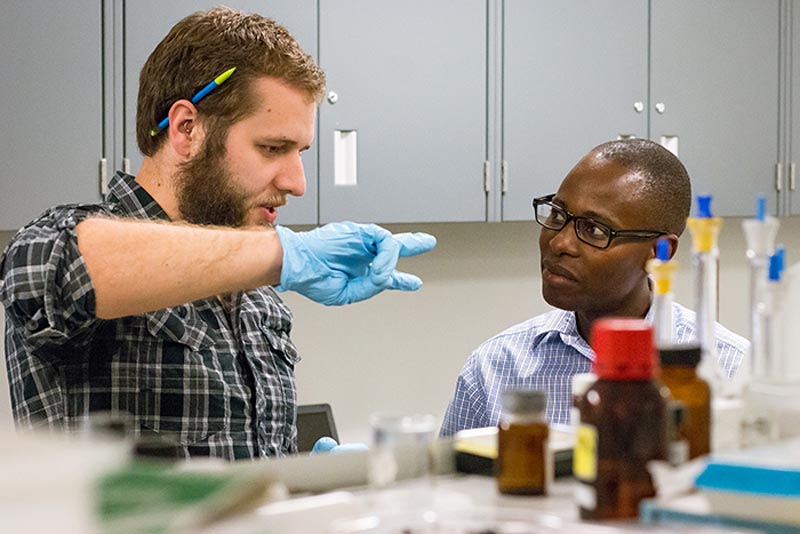MacEwan 50years 1971-2021
50 moments that matter
“The city is our campus.” These were among the first words used in 1971 to describe a new kind of post-secondary institution in Edmonton. Over the next 50 years, “The Edmonton College” would evolve from its humble beginnings in an old high school and a former grocery store into “Edmonton’s downtown university.”
Distilling the countless milestones, facts and figures into these 50 key moments that led MacEwan University to where it is today was no easy task.
Setting down roots and growing exponentially
One year after Alberta’s Minister of Education officially announced that a new community college would be located in Edmonton, Grant MacEwan Community College opened its doors in two makeshift campuses, serving 410 students. Over the next decade, the college would spread out into small campus spaces around the city to accommodate its growth – by the end of the 1970s, the institution had 6,000 full- and part-time students enrolled in 42 programs.
A new kind of college
The Alberta Colleges Commission establishes the Board of Governors, which begins a search for the president of a new kind of college not bound by existing institutions or practices to fill the gaps in the educational process.
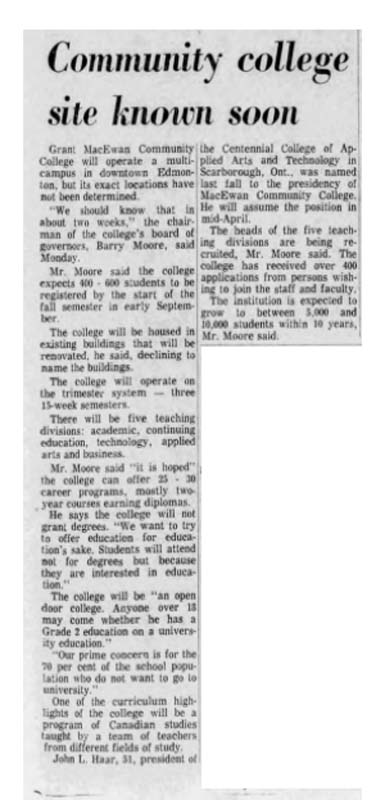
"Naturally, I have recalled many times my own thrilling introduction to the proposal to start a college. I was occupying an office in the Legislature Building about twenty-five years ago when two public spirited Edmontonians, Barry Moore and Judge Ed Stack, made an early morning call. They didn’t have time for coffee and a muffin but before leaving, Mr. Moore—now an active community college president in Eastern Canada—hinted that they had a plan. “We believe,” said Mr. Moore, “that Edmonton should have a community college to accommodate students who are no longer within reach of high schools and not qualified for university.” I was impressed and said so but his next remark left me momentarily speechless: “We would like to call it ‘Grant MacEwan’.” I was puzzled and flattered and didn’t overlook the possibility that my guests were indulging in humour. But graciously they explained that they were serious and had already taken the first steps to set their plan in motion. I then hastened to tell my visitors that I liked the idea of a college and was thrilled with their proposal for a name."
What's in a name?
The board consults the Names Commission (which usually names the city’s streets and avenues) for guidance. The commission suggests two potential names: Mr. John Michaels (a well-known public figure and owner of Mike’s Newsstand) and Dr. J.W. Grant MacEwan (then lieutenant governor of Alberta).
MacEwan.ca: Our namesakeFirst president
John L. Haar is named the college’s first president and assumes his duties in April 1971. His enduring legacy is his vision of a post-secondary institution with the “city as its campus.”
MacEwan.ca: Presidential spaces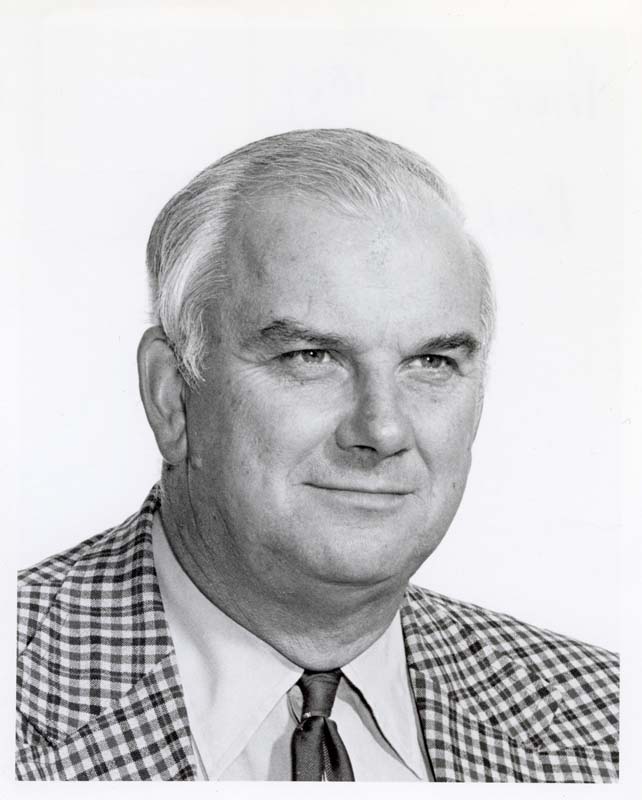
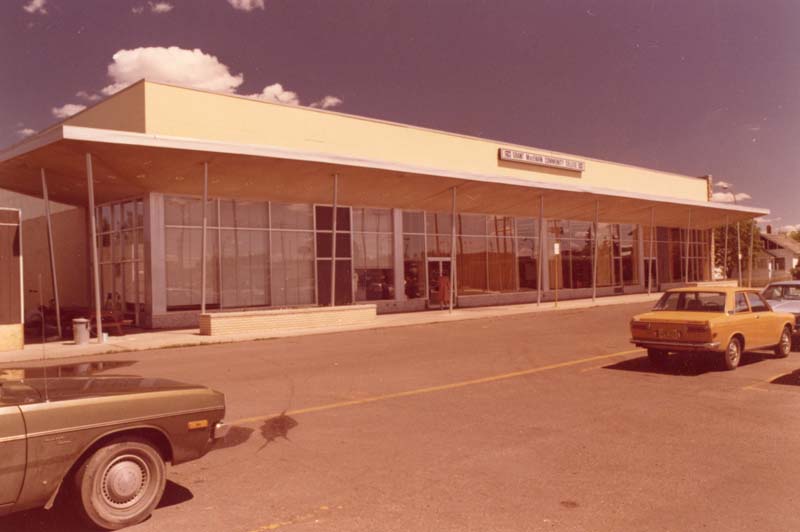
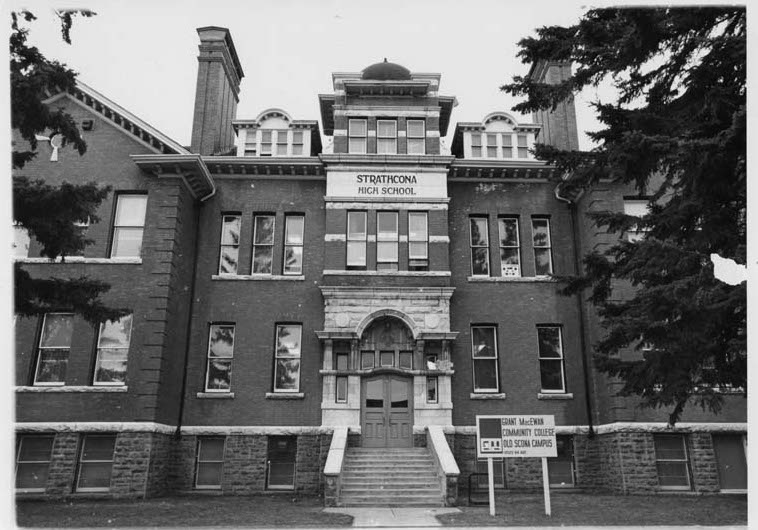
Setting down roots
Finding the right facilities dominates the early history of Grant MacEwan Community College (GMCC). When considering its first campus, the Board of Governors suggests that a downtown location would be preferable.
After using the RCMP Barracks at 9542 101A Avenue turns out to be unviable, Strathcona School becomes the first official college location and is known as the “Old Scona Campus.”
The Cromdale Campus, an old Dominion Store at 8020 118 Avenue purchased for $400,000, becomes the second campus. The former Workmen’s Compensation Building (10048 101A Avenue) is used for student affairs, and administration offices are in the Canada Trust Building at 10150 100 Street.
Our doors are open
Grant MacEwan Community College officially opens its doors in September, offering 16 two-year programs: child care worker, fashion sales technology, library technician, secretarial science, medical equipment technology, behavioural science technician, general arts and science diploma, social care worker, journalism, advertising, public relations, audio-visual technician, police science, business administration, nursing and recreational leadership.
The first Faculty Association meeting happens in September. By May, the college has 51 staff.
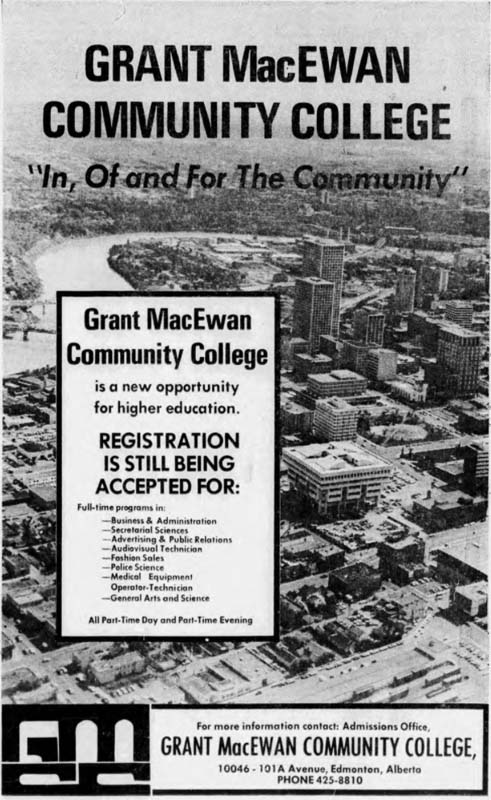
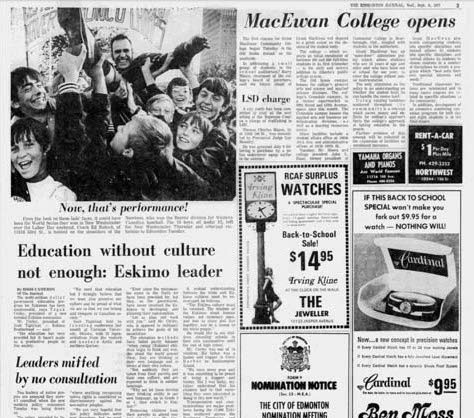
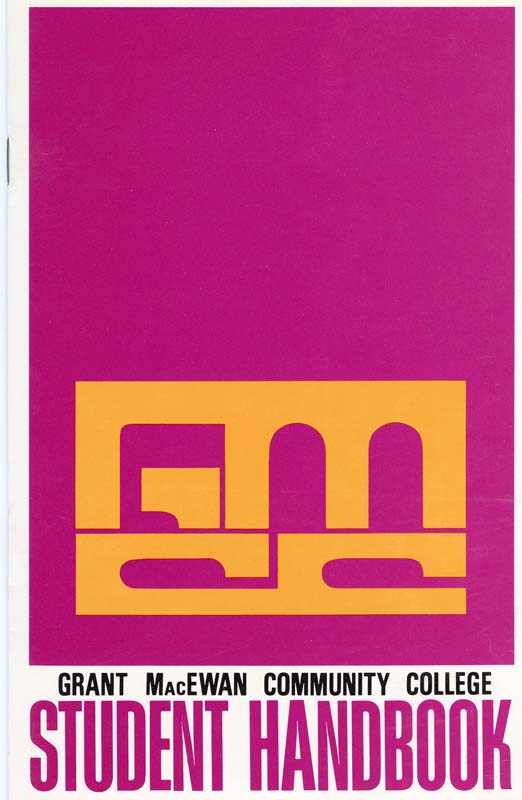
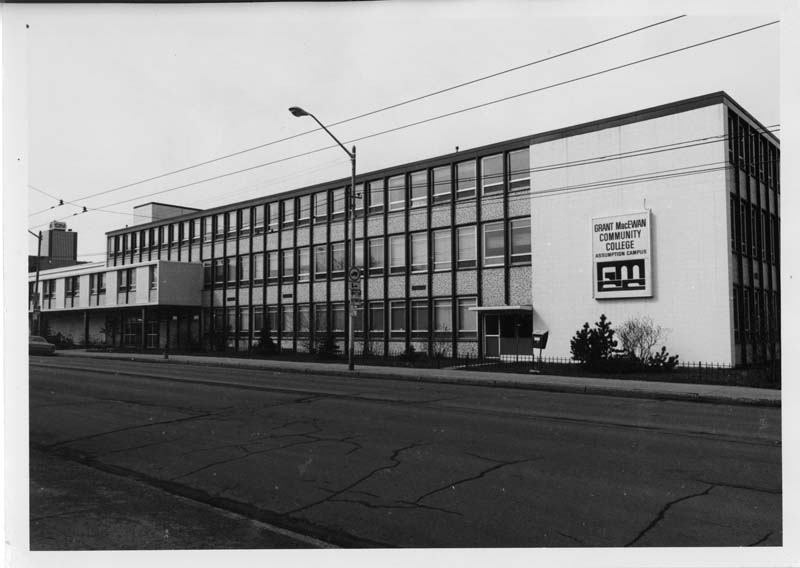
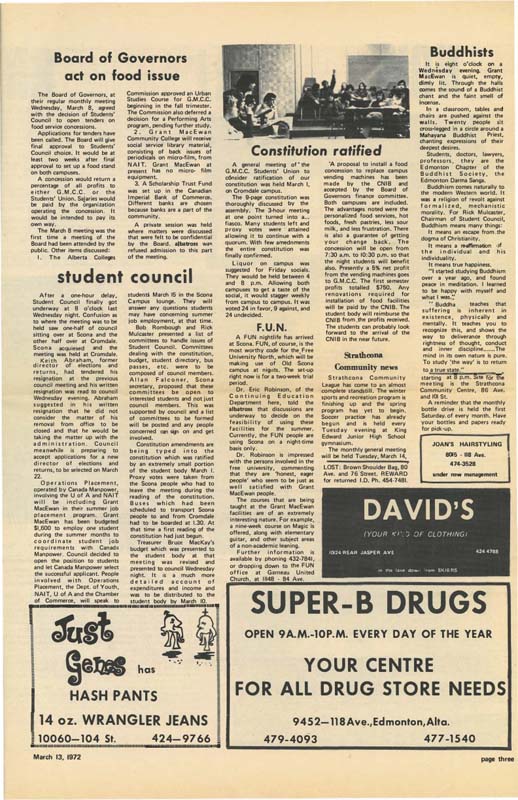
Adding a campus
A rapid increase in student enrolment during the college’s first year prompts the acquisition of a third campus – Assumption Campus at 107 Avenue and 97 Street. Both the Academic division and the Division of Business and Administration take up residence in this new space.
The GMCC Students’ Union forms (after the first student elections are held in October 1971).
Planning for growth
Jasper Place Campus opens in space leased from elementary schools.
The college presents its campus master plan to the public. It includes a recommendation to develop a “core campus” for the heart of Edmonton, serving an inner ring along with small satellite campuses to serve an outer-ring area within the Edmonton region.
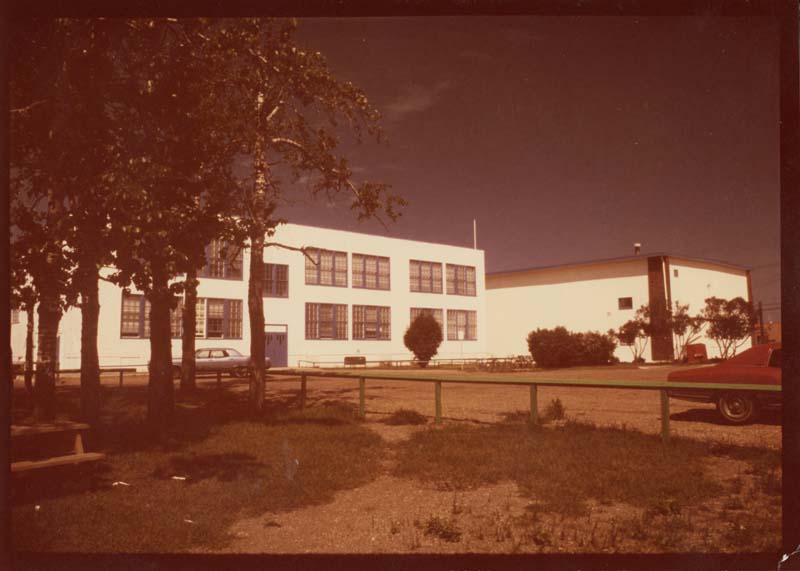
First purpose-built campus
Mill Woods Campus at 73 Street and 29 Avenue opens. It is the first facility specifically designed for and built by the college. Located on 9.7 acres, the campus includes 165,000 square feet of classroom space, offices, recreation facilities, a cafeteria, a learning resource centre and central storage. Over 700 full-time equivalent students enrol in 14 programs.
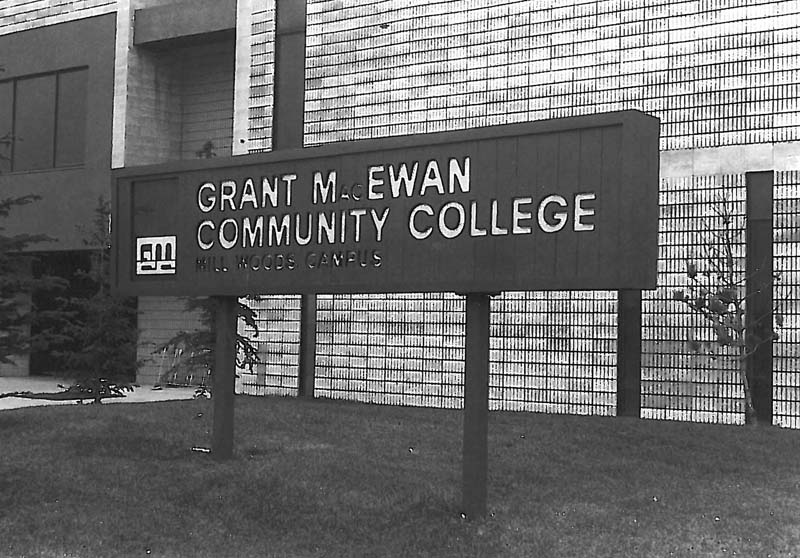
Managing growth and moving toward university transfer
As MacEwan entered its second decade, the province was struggling. A worldwide economic recession meant the oil boom was over, and post-secondary budgets were tighter. Enrolment doubled by the late 1980s, demand exceeded capacity by more than five to one, and the college began offering transfer programs to meet the province’s need to accommodate university students. As MacEwan grew into Alberta’s second-largest college, continuing with a small-campus model became increasingly unviable.
MacEwan goes "ultra-modern"
The new Jasper Place Campus (eventually renamed the Centre for the Arts and Communications) opens to replace the old Jasper Place and Assumption campuses.
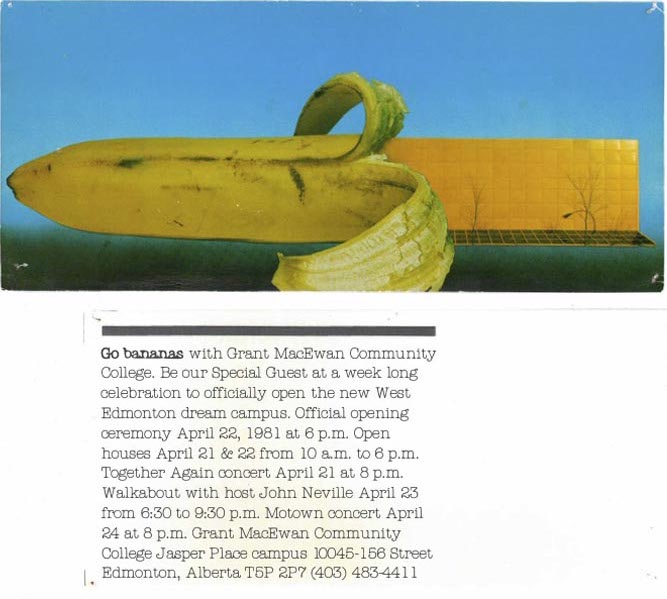
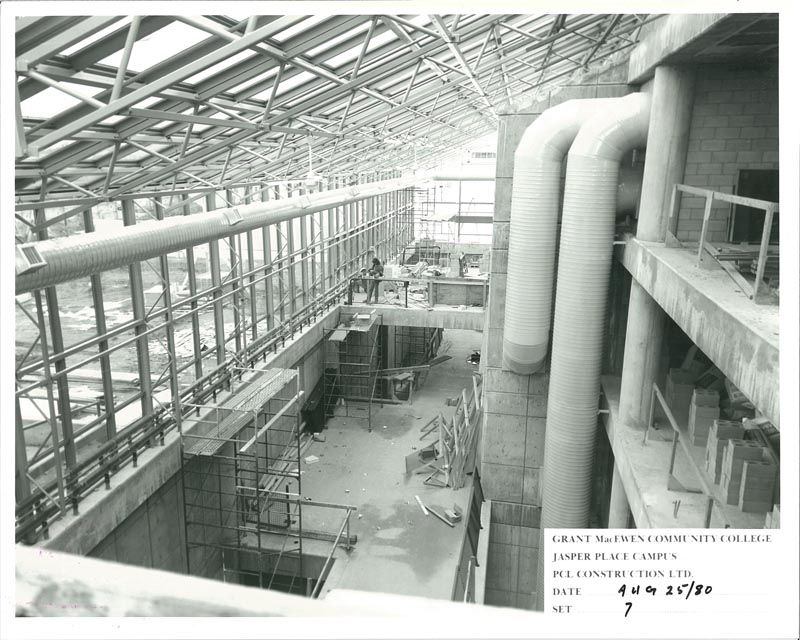
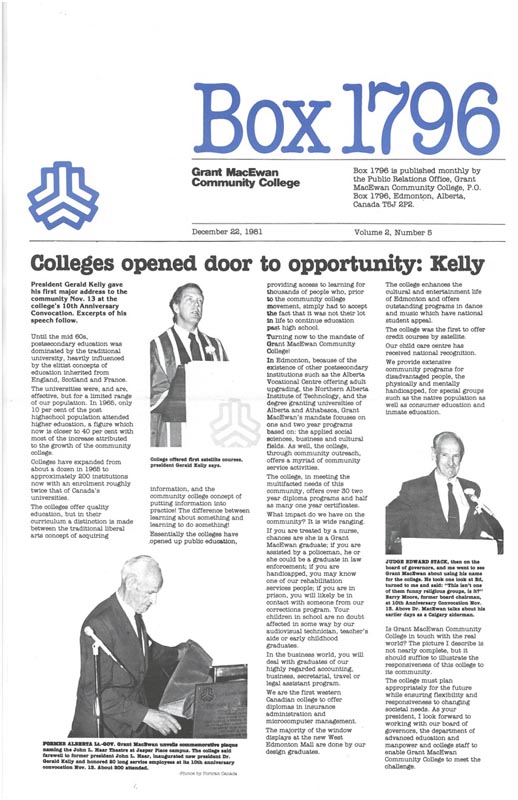
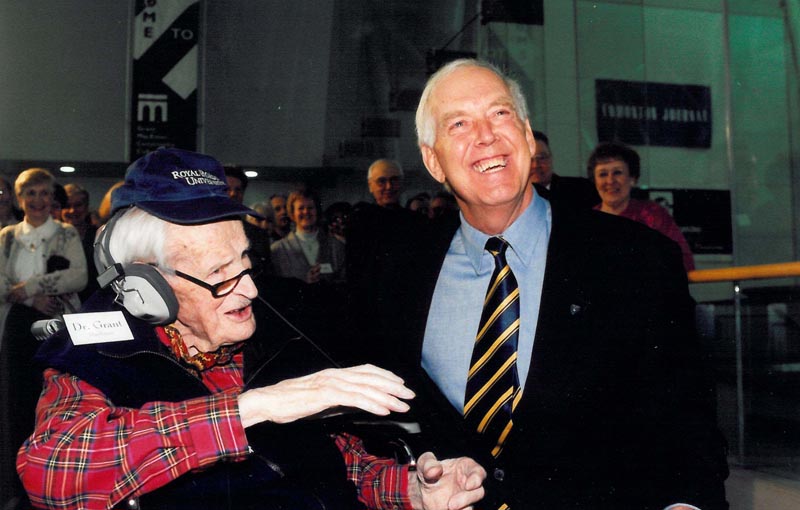
A second president
Dr. Gerald (Gerry) O. Kelly becomes MacEwan’s second president.
MacEwan.ca: Dr. Kelly – MacEwan Oral History ProjectDemand grows
The college offers 40 programs on three main campuses, and demand has never been higher. Credit enrolment tops 3,000 full-time equivalents (over 5,000 individuals), while another 9,000 students participate in program-related non-credit activity.
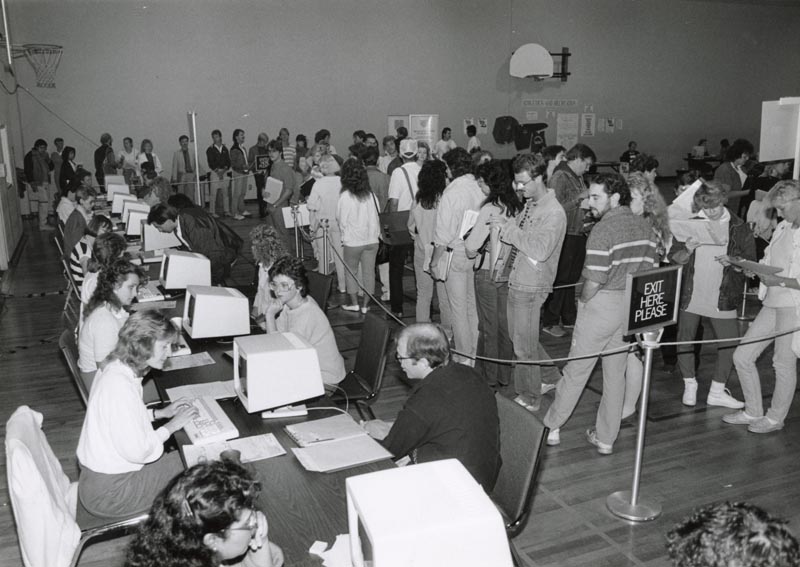
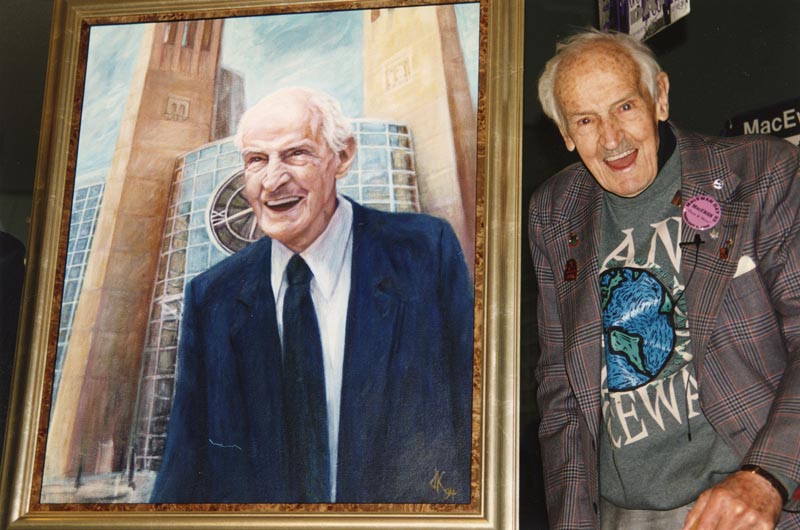
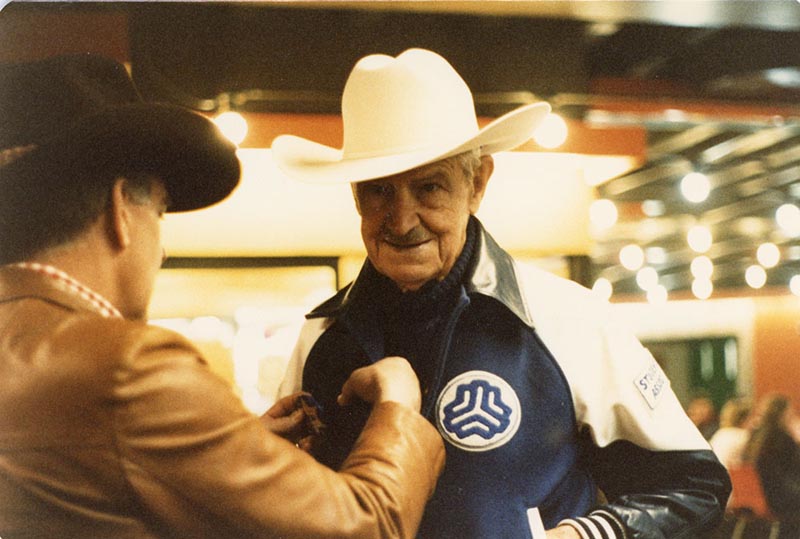
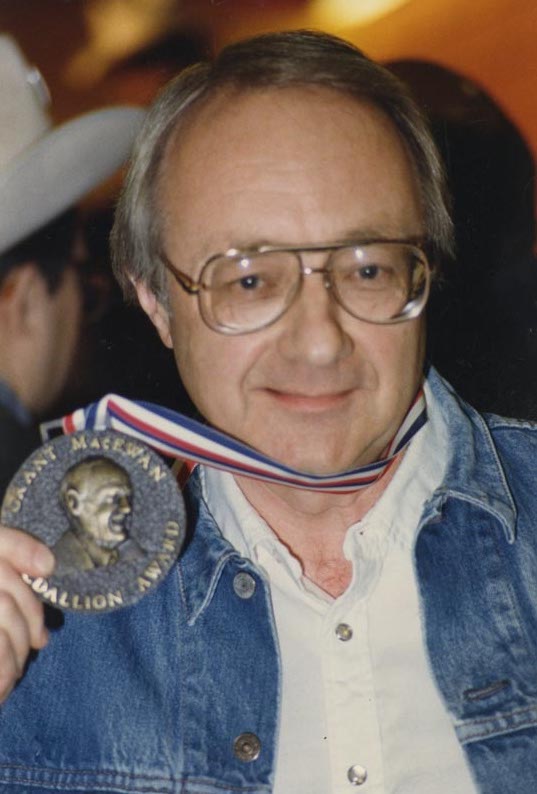
Grant MacEwan Day
In February, Dr. MacEwan visits the college and tours its campuses for the first Grant MacEwan Day. When visiting, he always took the bus from Calgary and stayed at the YMCA.
Two years later, the MacEwan Medallion is introduced to be presented each year on MacEwan Day to an employee who has made an outstanding contribution to the college.
Downtown bound
President Kelly, who had attended McGill – a downtown university – makes a presentation to the Mayor’s Task Force on the Heart of the City, sharing how a university in a city’s core can serve as a catalyst for vibrancy.
The board endorses the idea of a central campus – likely to be located on the CN rail yards – with some satellite campuses. The idea is wholeheartedly supported by the Downtown Development Corporation, the Downtown Business Association and the Chamber of Commerce.
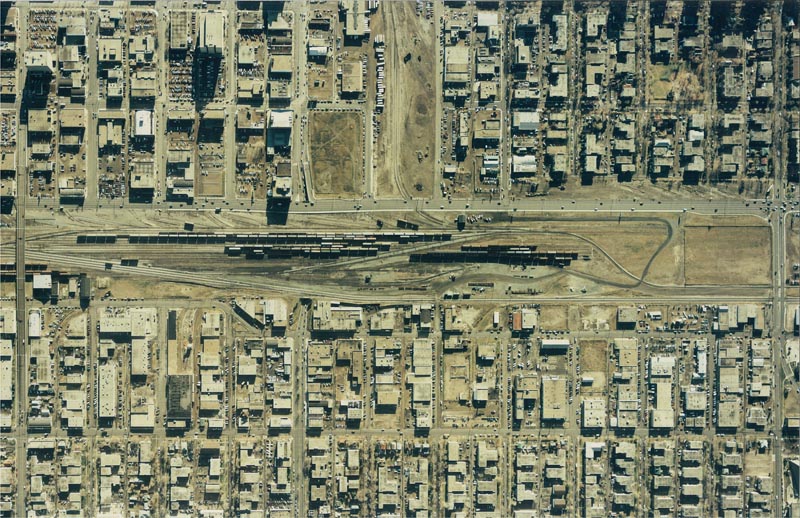
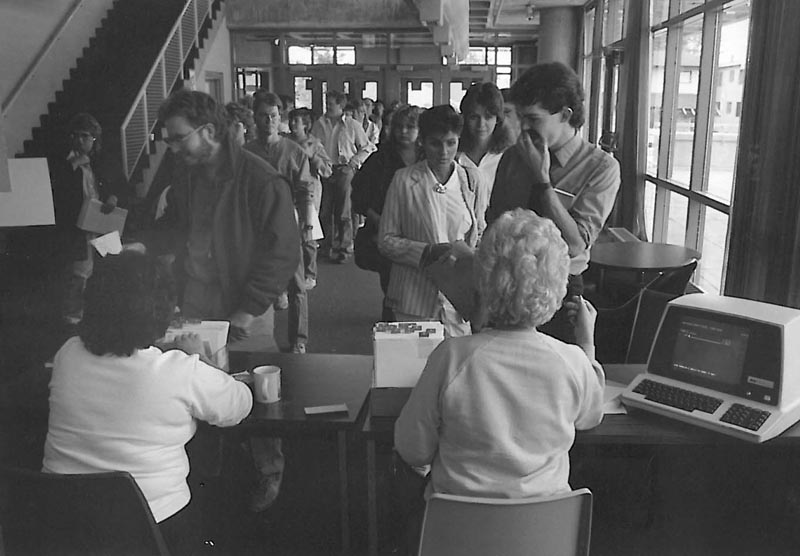
Toward university transfer
University transfer becomes a hot topic. In May, President Kelly advises the board he received a call from Advanced Education indicating that there may be a problem accommodating university students. He had been asked how quickly GMCC could move to accommodate them.
Recognizing distinguished alumni
The first Distinguished Alumni Award is presented. Between 1986 and 2019, 97 alumni are recognized.
40 new university transfer programs
Alberta Advanced Education approves university transfer programs, and the college develops 40 new science, arts and commerce courses.
Outreach credit programs are offered at Blue Quills Native Education Centre, Maskwacis Cultural College and Yukon College, and through MacEwan's continued involvement with the Yellowhead and Pembina Educational Consortia.
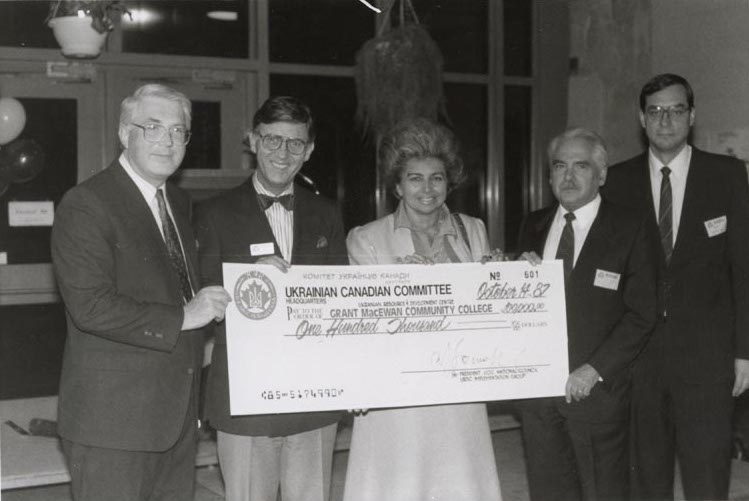
International connections
MacEwan establishes a new Ukrainian Resource and Development Centre (URDC) with a commitment to cultural mindfulness, relationship building and intercultural dialogue.
MacEwan International now has projects in seven countries.
Moving downtown and toward degree-granting status
Growing enrolment prompted the province to invest $100 million to build City Centre Campus. Teaching remained a key focus (the first Distinguished Teaching Awards were presented). University transfer programs continued to grow to a point where pursuing degree-granting status for the institution became a possibility. The college welcomes a new president and has a new name by the end of the decade.
Excellence in the arts
MacEwan has the largest and most comprehensive performing, visual and communication arts programming of any post-secondary institution in Canada.
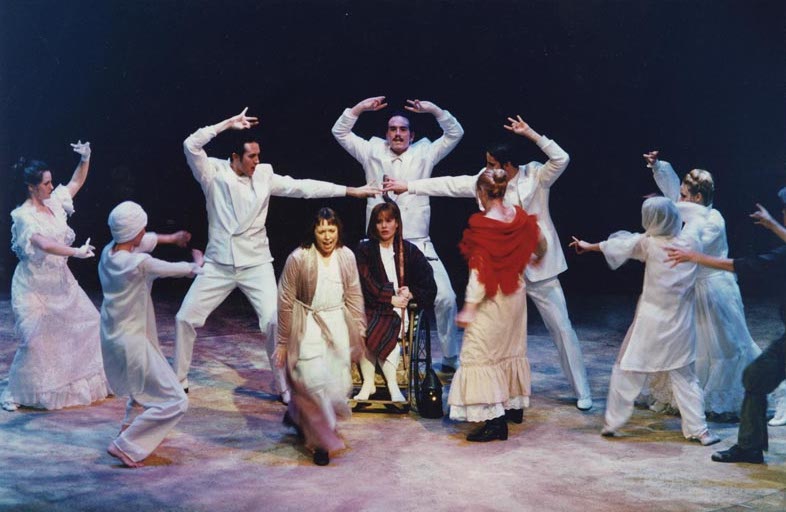
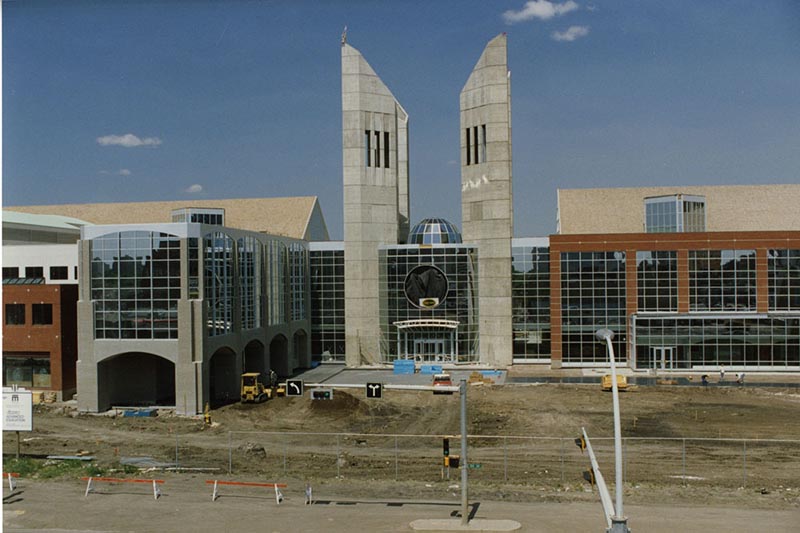
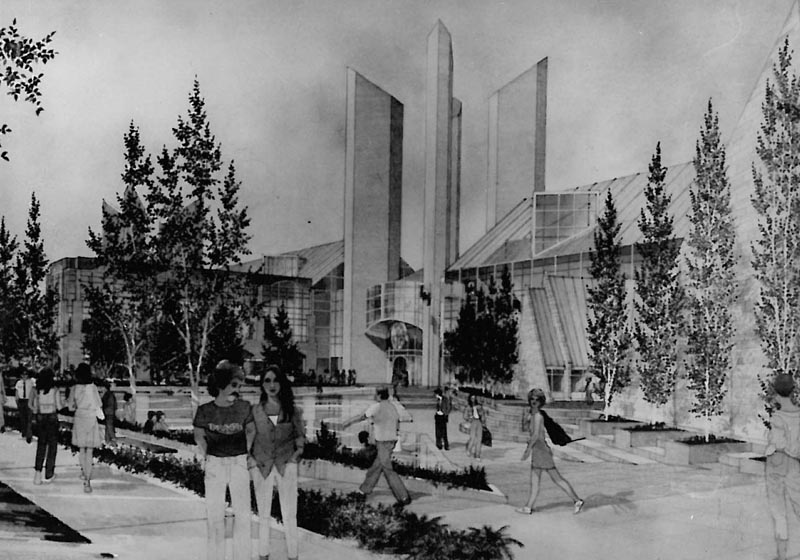
Building City Centre Campus
MacEwan breaks ground for City Centre Campus, and construction begins.
A future in degrees?
University transfer programs grow to the point where many people at MacEwan envision the possibility of degree-granting status for the institution.
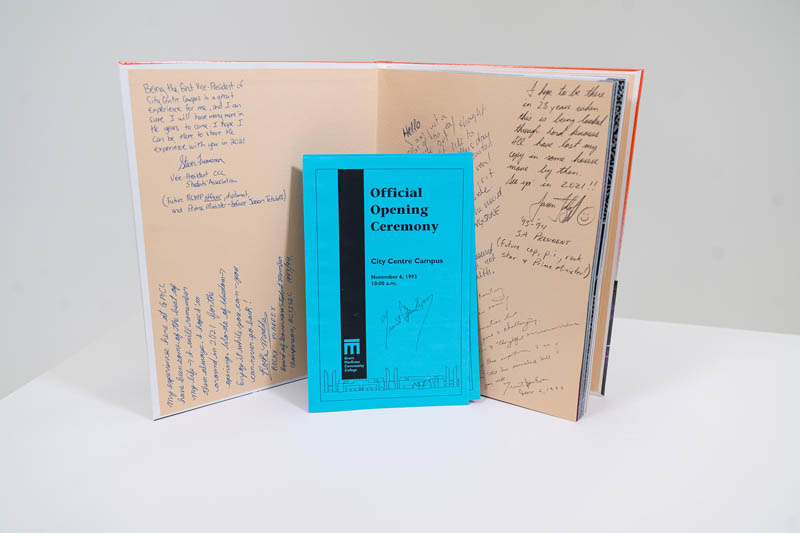
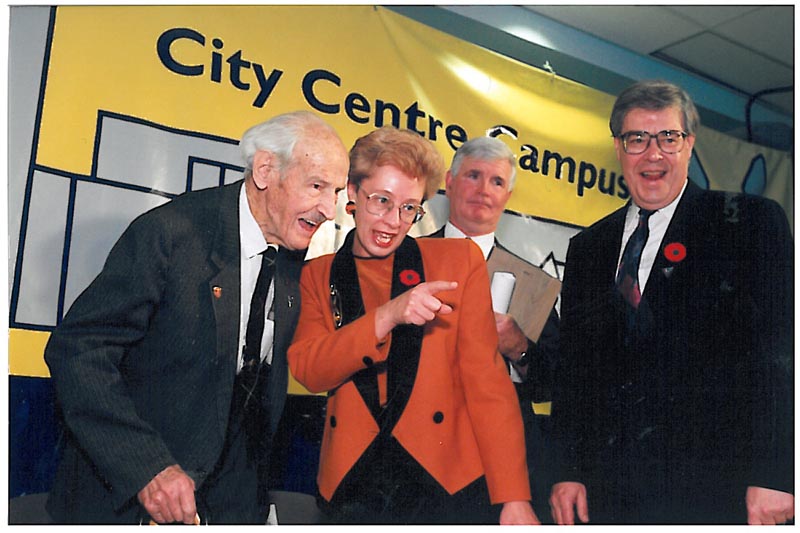
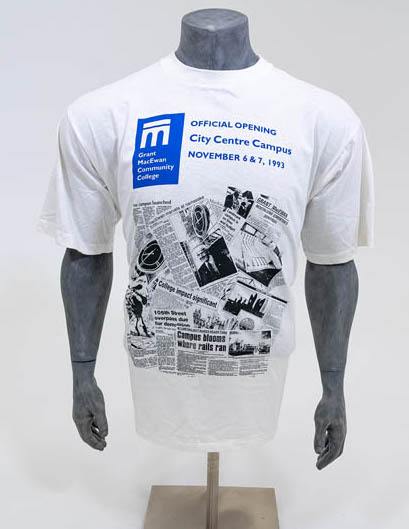
Opening City Centre Campus
MacEwan now offers 50 diploma and certificate programs in the liberal arts, science, business, community services, community education, health science, performing arts and visual communications.
The Students’ Association of MacEwan University (SAMU) creates a time capsule to commemorate the opening of City Centre Campus with instructions to open it on MacEwan’s 50th anniversary.
MacEwan publishes an early edition of The History of Grant MacEwan Community College: The First Two Decades.
Recognizing teaching excellence
The college announces its first Distinguished Teaching Awards. The award has been presented 91 times between 1994 and 2021.
MacEwan’s third president
Dr. Paul J. Byrne becomes president.
MacEwan.ca: Farewell to Dr. Byrne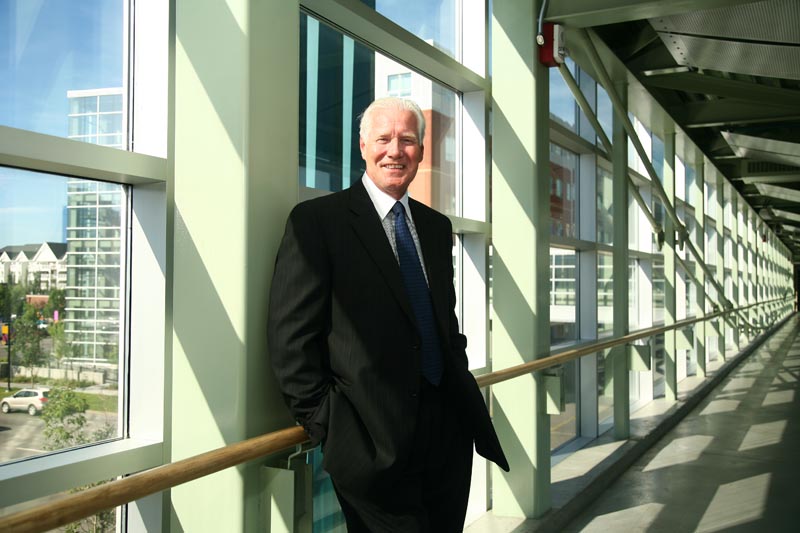
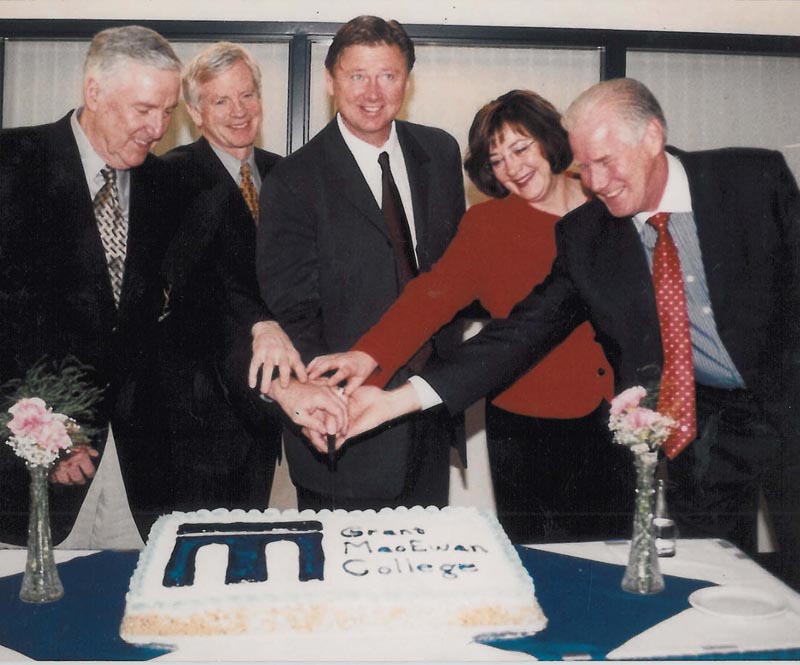
A new name
As part of its new strategic plan, Grant MacEwan Community College changes its name to Grant MacEwan College.
Growing by degrees
With the turn of the century, MacEwan became the number one transfer institution in Alberta. The college prepared to offer four-year degrees in response to student demand. The opening of the MacEwan Residence and the Robbins Health Learning Centre at the City Centre Campus brought even more students downtown, and with the end of another decade came another new name.
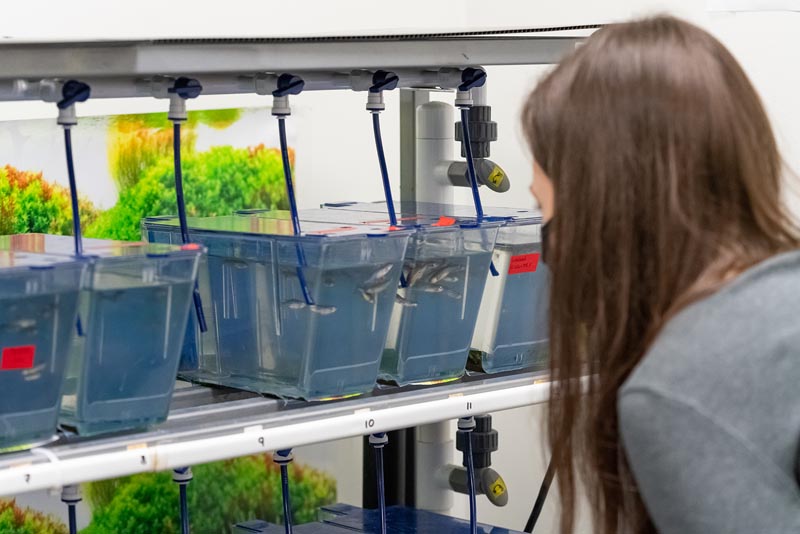
Formalizing faculty research
The college establishes research policies and later creates the Research Ethics Board (2006).
Dr. Cynthia Zutter is the first MacEwan faculty member to receive a Social Sciences and Humanities Research Council (SSHRC) grant for her project “Palaeoethnobotanical research in Northern Labrador.”
Living downtown
Life on campus takes on a new meaning as MacEwan Residence opens its doors at City Centre Campus.
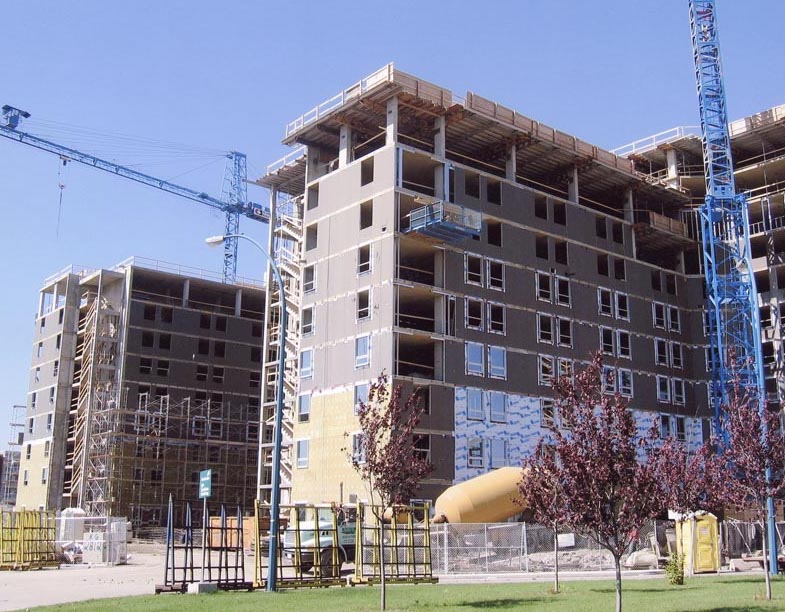
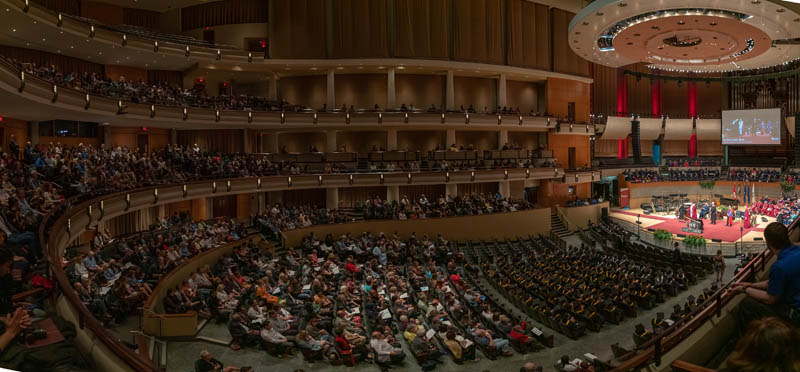
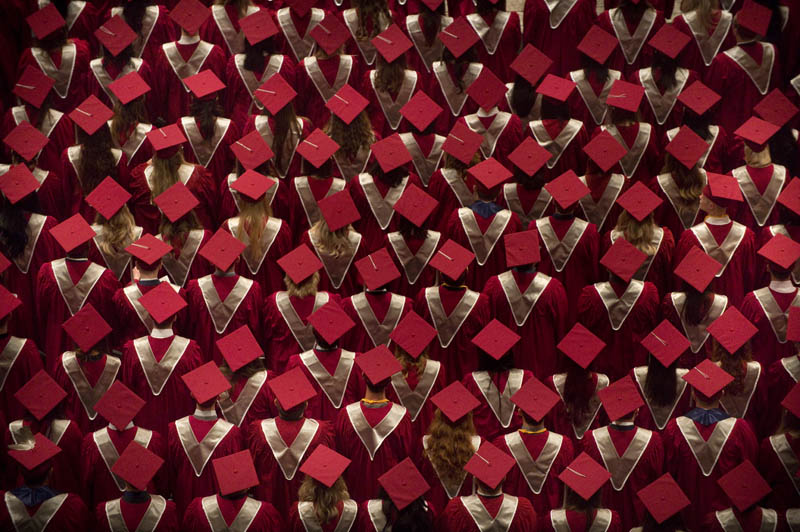
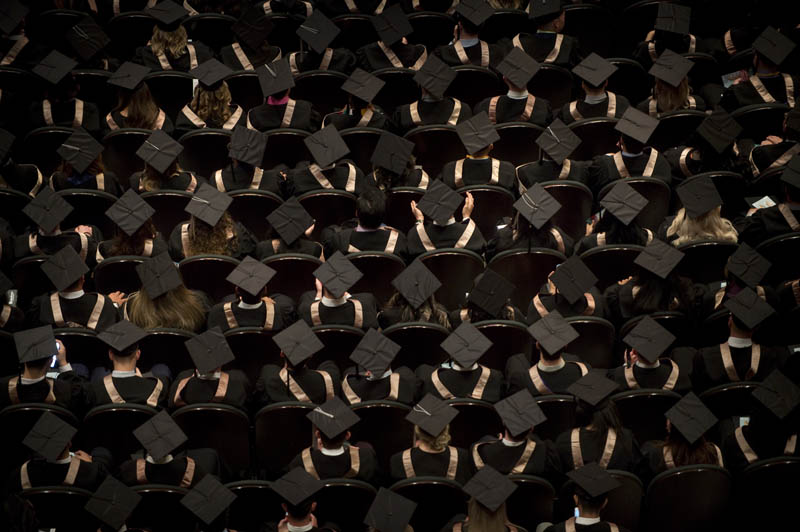
A degree-granting institution
MacEwan begins offering four-year Bachelor of Arts and Bachelor of Child and Youth Care programs.
Bachelor of Commerce and Bachelor of Science in Nursing follow in 2007, then Bachelor of Science in 2009, Bachelor of Music and Bachelor of Communication Studies in 2011, Bachelor of Psychiatric Nursing in 2014, Bachelor of Social Work in 2016, Bachelor of Design in 2019, Bachelor of Early Childhood Curriculum Studies in 2020.
MacEwan’s newest degree, Bachelor of Fine Arts, will take its first students in the Fall of 2022.
A centre for health learning
Robbins Health Learning Centre opens, providing a dynamic environment of lecture theatres, gathering spaces and labs for students in health-related disciplines.
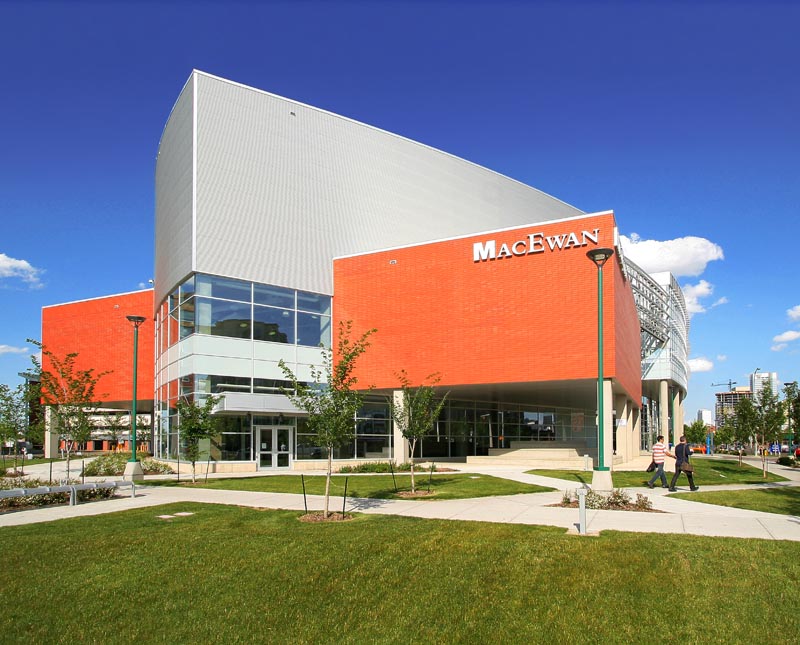
Focusing on teaching, scholarly activity, and community and social responsibility
The move to degree-granting status brought an increasing focus on scholarship, which presented opportunities for students to engage in research and scholarly activity. MacEwan embraced the concept of a single, sustainable campus and became a fully downtown university when Allard Hall opened and all Faculty of Fine Arts and Communications programs moved to City Centre Campus.
Further establishing research at MacEwan
For the first time, MacEwan faculty members receive Natural Sciences and Engineering Research Council of Canada (NSERC) college grants. Dr. Jonathan Withey and Dr. Samuel Mugo are the first recipients.
A series of Undergraduate Student Research Initiatives (USRI) grants launch to encourage student involvement in research activities.
MacEwan.ca: NSERC grant to MacEwan
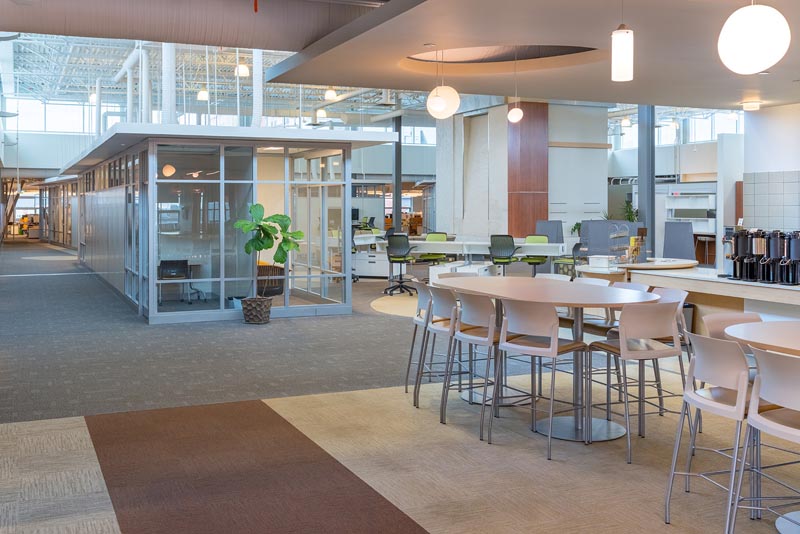
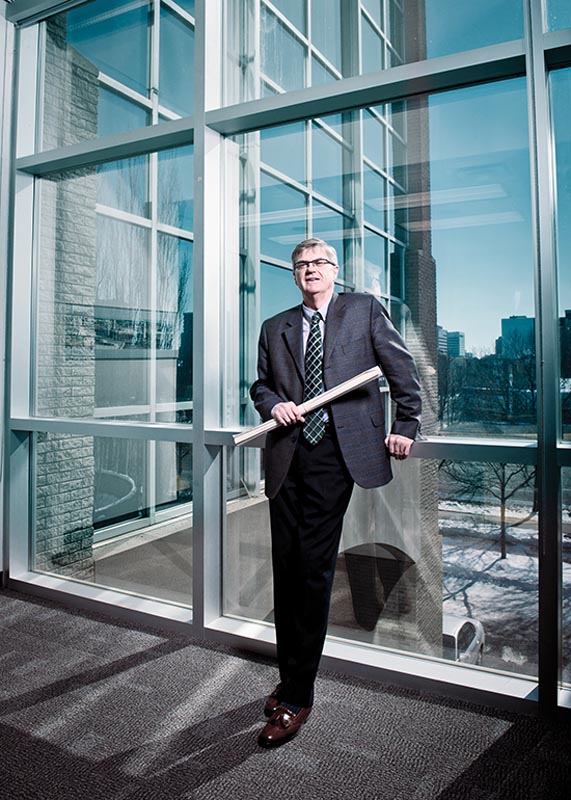
New president, new spaces
Dr. David W. Atkinson is installed as president.
A new University Service Centre, housed on the top floor of the West Parkade at 110 Street and 104 Avenue, creates space for 200 staff members. The project takes an innovative approach to renovating existing infrastructure and optimizing land use.
MacEwan.ca: Welcoming Dr. David AtkinsonNew name, new logo, new athletics conference
Grant MacEwan University rebrands to become MacEwan University and unveils a new logo design.
MacEwan becomes the 17th member of the Canada West Universities Athletics Association. In 2014, basketball, cross-country running, soccer and volleyball teams begin competing in Canada West.
MacEwan.ca: Joining Canada WestSouth Campus programs move downtown
Programs at the South Campus (formerly known as the Mill Woods Campus) move to City Centre Campus on the heels of an announcement by the province of $30 million to support the building of Allard Hall.
MacEwan.ca: South CampusRecognizing research
The first NSERC Discovery Grants are awarded to MacEwan faculty members Dr. Jeffrey Andrews (Math), Dr. Trevor Hamilton (Psychology), Dr. Chris Striemer (Psychology), Dr. Nicolae Strungaru (Math) and Dr. Adi Tcaciuc (Math).
The MacEwan University Student eJournal (MUSe) and RO@M, a database of research conducted by MacEwan faculty and staff, are launched.
A new Distinguished Research Award is introduced, and Dr. Allan Gilliland is named the first recipient.
MacEwan.ca: First NSERC Discovery GrantsAllard Hall opens
The Centre for the Arts and Communications (formerly known as Jasper Place) closes, and all programs move to City Centre Campus. Allard Hall opens, providing state-of-the-art technology, classroom and performance areas.
MacEwan.ca: Welcome to Allard HallExpanding research and supporting social innovation
MacEwan introduces two Board of Governors Research Chair positions focused on building the research culture at the university. The first recipients are Dr. Sandy Jung and Dr. Samuel Mugo.
MacEwan introduces a new Social Innovation Institute, along with a co-working space in Allard Hall called Roundhouse. Both are focused on serving a community of changemakers, small businesses and innovators.
MacEwan.ca: New Social Innovation Institute
Full university status
MacEwan becomes an undergraduate university under the Post-Secondary Learning Act.
MacEwan announces its first Canada Research Chair. Dr. Kristopher Wells is named Canada Research Chair (CRC) in Sexual and Gender Minority Youth Issues.
Growing boldly
Today, the city remains MacEwan’s campus. Teaching is our focus, and work-integrated learning and community-engaged scholarship are increasingly critical components of the educational experience. A new chancellor has been installed, the university’s first honorary doctorates have been conferred, and MacEwan is setting a path forward as it prepares a new strategic vision for the future.
By the numbers
MacEwan has more than 18,000 students studying in 68 programs across four faculties and two schools.
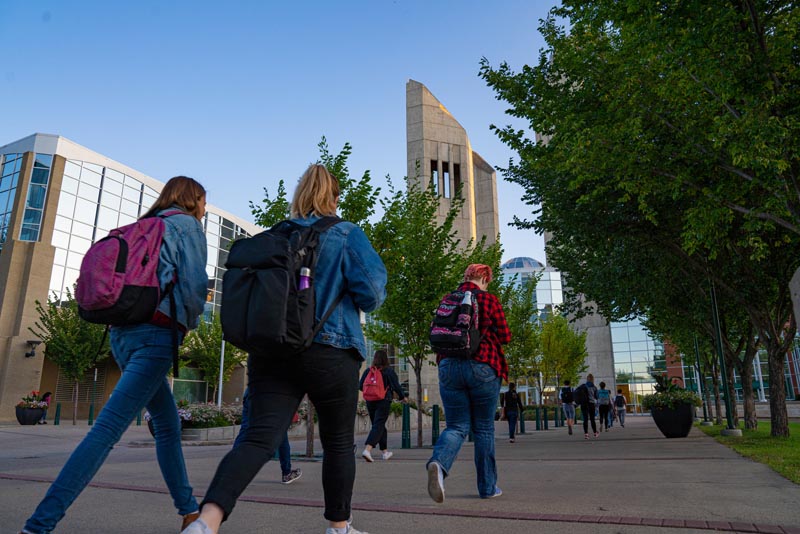
A new president
Dr. Annette Trimbee is installed as president.
The university quickly shifts to online learning in March as a result of the COVID-19 pandemic.
MacEwan.ca: Presidential installation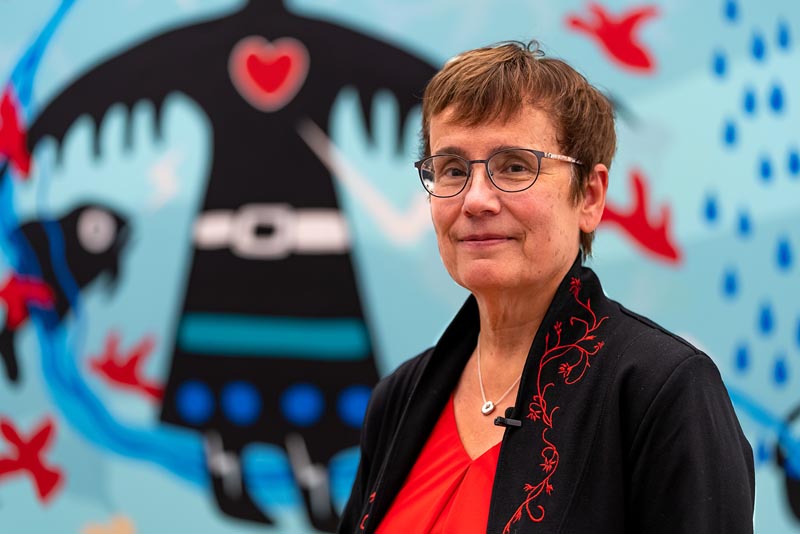
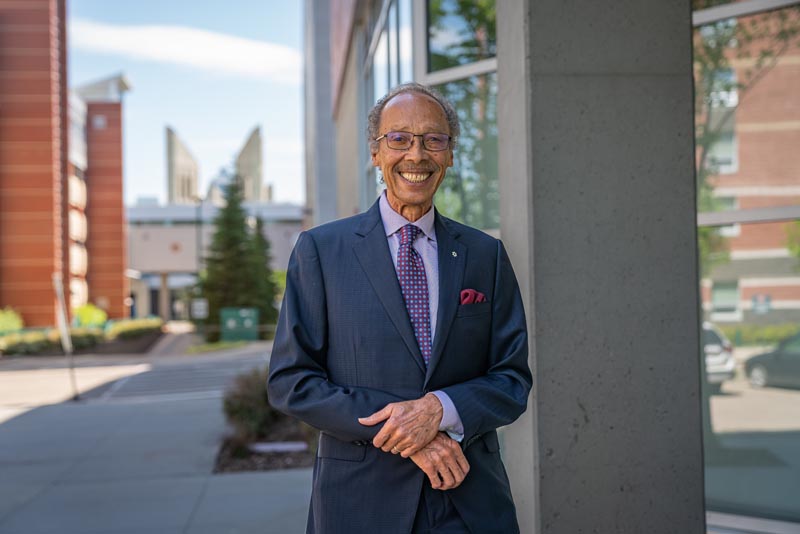
Installing the first chancellor, awarding honorary doctorates and marking 50 years
The university installs its first chancellor, Dr. Anthony (Tony) Fields. Dr. Fields also receives one of MacEwan’s first honorary doctorates, along with alumna Brenda Barton.
MacEwan celebrates its 50th anniversary and prepares to introduce a new strategic vision that will set the course for the university’s future.
MacEwan.ca: First chancellorLooking forward
Through five decades of change – four different names, dozens of programs, six presidents, 80,000 alumni, and close to 20 different teaching and administrative sites – the city remains our campus. As does our commitment to responding to the world with educational thinking that meets the challenges that come with change, embraces community, responds to the evolving world of work, supports people coming together in new ways and bolsters the idea that education is a lifelong journey.
